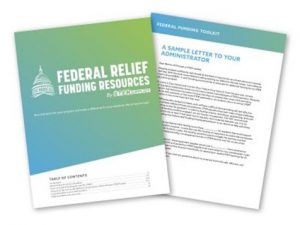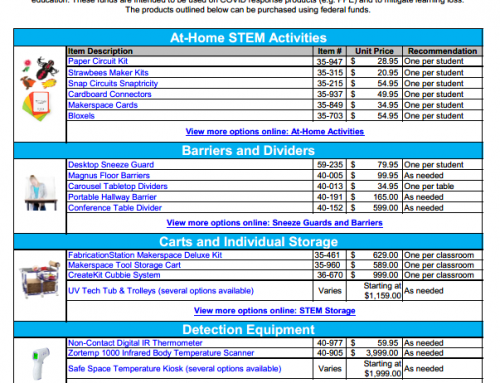Throughout the last few years, both students and teachers have endured an education experience unlike anything ever felt throughout history. As schools have come back in session, teachers are looking for ways to make up for lost time and to make sure that their students are having the best education experience. As a response to the possible learning loss impacts of the pandemic, the federal government has passed billions of dollars in funding for schools. One of these sources of funding is ESSER, and this article will walk you through how ESSER impacts you, the classroom teacher.
1. What is ESSER?
As a response to the COVID-19 pandemic, the federal government passed three major funding bills putting billions of dollars into circulation. Under one of those bills, the Elementary and Secondary School Emergency Relief (ESSER) Fund was created and provides nearly $14 billion to education agencies. You can use this for a wide range of activities in your school like supplemental learning, addressing the needs of at-risk students, purchasing education equipment, investing in professional development, and more.
2. How much funds did my school district get?
The U.S. Department of Education has put together an Education Stabilization Fund (ESF) portal where you can track how funds are awarded and spent at your location. Access the portal by clicking here.
3. How do I know what my district is going to use ESSER for?
Before the funds were disbursed, state and school district educational agencies had to create a plan that addresses their intent in using these funds. Since this funding is provided by the federal government, those plans are public and you can access your state’s plan at the Office of Elementary & Secondary Education website here.
4. If I’m a teacher, how do I get funds that went to my district?
The first thing you should do is conduct some research about how your state intends to use ESSER funds. These approved plans are in PDF form, so it’s easy to do a “find” search and look for keywords that relate to your programs (e.g., “STEM” or “After School”). Some districts have even made and published their plans on the district’s websites, so you may be able to find a plan that is more specific to your district.
If you believe that the funding could impact your classroom (spoiler – you will!), your next step is to connect with the person in your district who usually handles federal funding, like a Federal Grants Coordinator. In this conversation, you would outline how what you do in your classroom relates directly to the district’s ESSER plan. We’ve made it easy for you by creating a template letter you can send to your administration!
If you’re not sure who the right contact is within your district, you can start with your principal or STEM coordinator. These people may be able to direct you to the right contact or be able to work with the right contact on your behalf.
5. What’s my deadline?
ESSER funds need to be spent by 9/30/2024. Even though that deadline feels far away, the planning and spending is already well underway. It’s best to insert yourself into the conversation with your district as early as possible so they are aware of your classroom needs as they engage in discussions on how specifically they plan to spend the ESSER funds.
6. Where can I get more information?
 STEM Supplies has put together a comprehensive toolkit with all of the information that you need about federal relief funding! The toolkit includes:
STEM Supplies has put together a comprehensive toolkit with all of the information that you need about federal relief funding! The toolkit includes:
- An overview of the funding available with deadlines
- How federal funding can be used specifically for STEM education
- Planning tips to consider before consulting your administration
- A sample letter to send to your administration requesting funds
Download our free Federal Relief Funding Guide here!









Leave A Comment